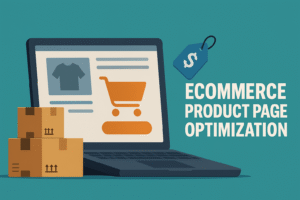Supply chain management is a critical component that drives the success of any business. It encompasses everything from sourcing raw materials to delivering the final product to consumers. Effective management of the supply chain can lead to cost savings, increased efficiency, and customer satisfaction.
However, it’s not without its challenges. This article aims to shed light on the three of the most prevalent challenges that businesses face in supply chain management and offers actionable solutions to overcome them.
The Complexity of Modern Supply Chains
Managing a supply chain today is far more intricate than it was just a decade ago. The globalization of markets, the rise of ecommerce, and the integration of advanced technologies like Artificial Intelligence and the Internet of Things have all contributed to this complexity.
Businesses now have to coordinate with multiple suppliers, manufacturers, and distributors, often spread across different continents. This international scope brings its own set of challenges, including navigating different regulatory environments, customs procedures, and quality standards.
Moreover, the intricate web of operations introduces variables like geopolitical issues, currency fluctuations, and logistical bottlenecks. For example, a political dispute between countries could lead to trade restrictions, affecting the supply of critical raw materials. Similarly, sudden changes in currency value can have a significant impact on costs.
The digital transformation of supply chains adds another layer of complexity. While technologies like blockchain and data analytics offer improved transparency and efficiency, they also require specialized skills to manage effectively.
The more complex the system, the more vulnerable it is to disruptions, errors, and inefficiencies. A single breakdown in one part of the chain can have a ripple effect, causing delays and increased costs throughout the entire network.
Therefore, understanding these complexities is not just an academic exercise; it’s a business imperative. The first step in overcoming the challenges presented by modern supply chains is recognizing the multifaceted nature of the problems at hand.
Challenge 1: Supply Chain Disruptions
Supply chain disruptions are unexpected events that halt or impede the normal flow of goods and services within a supply chain. These disruptions can manifest in various forms, from natural disasters like hurricanes and earthquakes to human-made challenges such as labor strikes, cyber-attacks, or geopolitical tensions.
The Far-Reaching Impact
The repercussions of supply chain disruptions are not to be underestimated. They can result in delays in product delivery, which in turn can lead to stockouts and lost sales opportunities. The operational costs can also skyrocket due to the need for expedited shipping or overtime labor to catch up on lost production time.

In the worst-case scenario, a company may face legal consequences for failing to meet contractual obligations, not to mention the long-term damage to customer trust and brand reputation.
Mitigation Strategies
While the risks are high, businesses have several tools at their disposal to mitigate the impact of supply chain disruptions:
Risk Assessment and Contingency Planning: Regularly conducting risk assessments can help identify vulnerabilities in your supply chain. Once these weak points are known, companies can develop contingency plans tailored to different types of disruptions, from supplier failures to transportation issues.
Supplier Diversification: Relying on a single supplier or geographic location is a risky strategy. By diversifying the supply base, businesses can reduce their exposure to localized disruptions. This could mean sourcing materials from different countries or even different continents.
Technology Utilization for Real-Time Monitoring: Advanced technologies like IoT sensors and predictive analytics can provide real-time insights into supply chain activities. These technologies can flag potential disruptions before they escalate, allowing for timely interventions.
Agile Operations for Rapid Response: An agile supply chain is one that can adapt quickly to changing circumstances. This involves having flexible contracts, scalable operations, and a rapid response mechanism to adapt to unforeseen events.
Insurance as a Financial Safety Net: Supply chain interruption insurance can provide a financial cushion for losses incurred due to disruptions. While it won’t prevent the disruption, it can alleviate some of the financial stress during the recovery phase.
By implementing these strategies, businesses can not only mitigate the impact of current disruptions but also better prepare for future challenges, making their supply chain more resilient and robust.
Challenge 2: Cost Inflation and Raw Material Prices
One of the most pressing challenges in supply chain management is the fluctuating costs of raw materials and other essential components. Prices can vary due to a multitude of factors, including market demand, geopolitical tensions, and even environmental conditions. These fluctuations make it difficult for businesses to predict costs accurately, leading to budget overruns and reduced profitability.
The Challenge of Managing Costs
Cost inflation in the supply chain is not just a financial issue; it’s a strategic one. When the prices of raw materials rise, it puts pressure on every subsequent stage of the supply chain, from manufacturing to distribution. This can lead to increased product prices, which may not be easily accepted by consumers, especially in competitive markets.
Solutions for Better Cost Management
While cost inflation may be inevitable, there are strategies to manage and even mitigate its impact:
Dynamic Pricing Strategies: Implement dynamic pricing models that adjust in real-time based on the cost of raw materials. This allows businesses to maintain their profit margins without alienating customers.
Volume Purchasing: Consider buying raw materials in bulk during periods of low prices. However, this strategy requires ample storage space and effective inventory management.
Supplier Negotiations: Establish strong relationships with suppliers and negotiate terms that allow for some flexibility in pricing or even fixed-rate contracts for a specified period.
Efficiency Improvements: Invest in technologies and processes that improve operational efficiency, thereby reducing the overall cost of goods sold. Techniques like lean manufacturing can be particularly effective.
Data Analytics for Forecasting: Utilize data analytics tools to forecast price trends for raw materials. Accurate forecasting can help businesses prepare for cost increases and adjust their strategies accordingly.
Through the adoption of these solutions, businesses can gain a more predictable and manageable cost structure, allowing them to remain competitive even in the face of rising expenses.
Challenge 3: Talent and Labor Shortages
A less obvious but equally critical challenge in supply chain management is the shortage of skilled labor. As supply chains become more complex and technology-driven, the need for specialized skills in areas like data analytics, logistics, and procurement is growing.

However, the supply of qualified talent is not keeping pace, leading to operational inefficiencies and increased costs.
The Talent Gap in Supply Chain Management
The shortage of skilled labor is not just a recruitment issue; it’s a strategic bottleneck that can hamper growth and innovation. When businesses can’t find the right talent, they may resort to overworking their existing staff or settling for less qualified candidates, both of which are unsustainable solutions in the long term.
Actionable Steps to Address the Talent Shortage
While the talent gap is a complex issue, there are several actionable steps that businesses can take to mitigate its impact:
Invest in Training and Development: Instead of solely relying on external recruitment, invest in training programs to upskill your existing workforce. This not only fills skill gaps but also improves employee retention.
Collaborate with Educational Institutions: Partner with colleges and vocational schools to develop curriculum tailored to the needs of the supply chain industry. This ensures a steady pipeline of qualified candidates.
Leverage Technology: Use automation and AI to handle repetitive tasks, freeing up human resources for more complex, value-added activities.
Flexible Work Arrangements: Offer remote work or flexible hours to attract a broader range of candidates who may be deterred by rigid work schedules or geographic limitations.
Competitive Compensation Packages: To attract top talent, offer competitive salaries along with benefits like healthcare, retirement plans, and performance bonuses.
Conclusion: Navigating the Maze of Supply Chain Challenges
Managing a supply chain is akin to navigating a complex maze where each turn presents its own set of challenges. From the intricacies of modern supply chains to disruptions, cost inflation, and talent shortages, the obstacles are numerous but not insurmountable.
Key Takeaways
The challenges discussed in this article are common yet critical. Supply chain disruptions can derail operations, but risk assessment and contingency planning can mitigate their impact. Cost management remains a constant struggle, but strategic sourcing and real-time data analytics can offer valuable insights. The talent gap is widening, but a multi-faceted approach that includes training, technology, and partnerships can bridge it effectively.
The Path Forward
The key to successfully navigating these challenges lies in proactive management. Waiting for problems to arise before taking action is a recipe for failure. Businesses must invest in technology, cultivate talent, and build resilient strategies to not just survive but thrive in today’s complex supply chain landscape. By taking these proactive steps, you can turn challenges into opportunities for growth and innovation.









